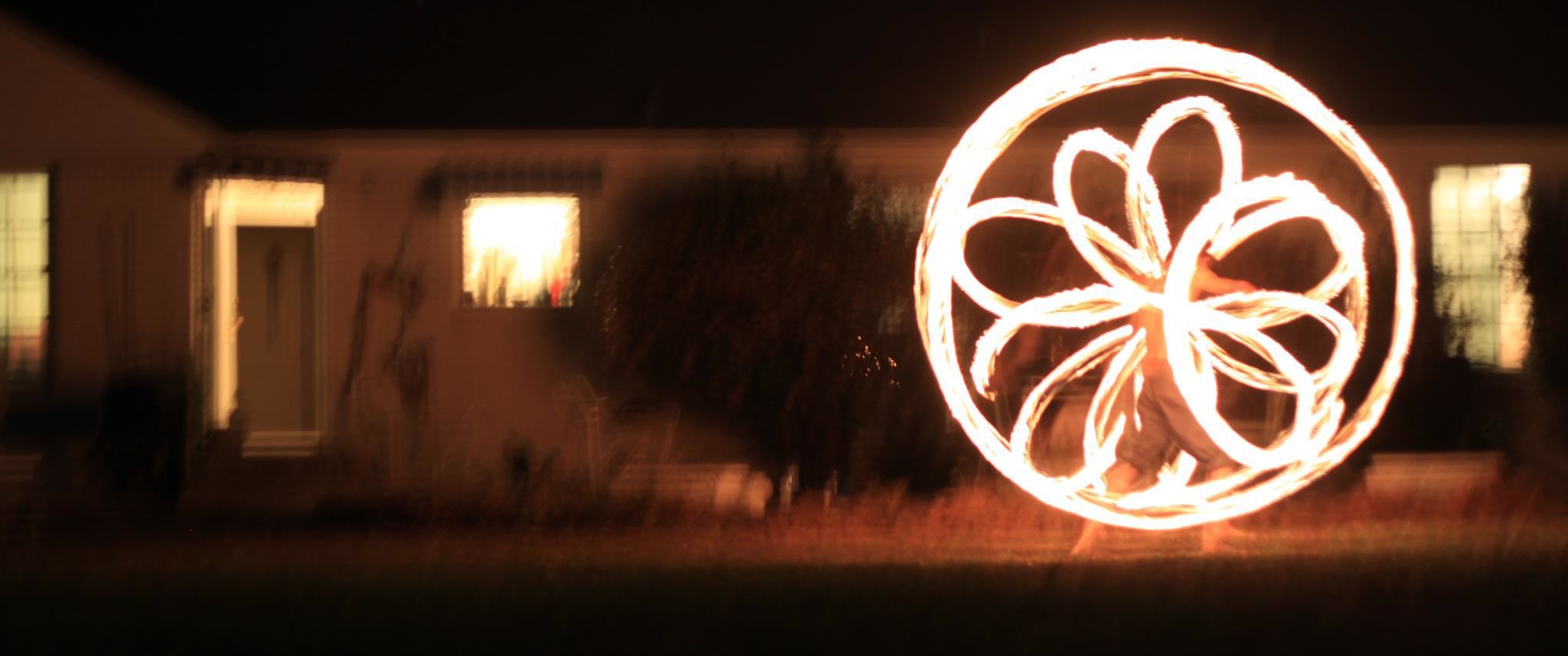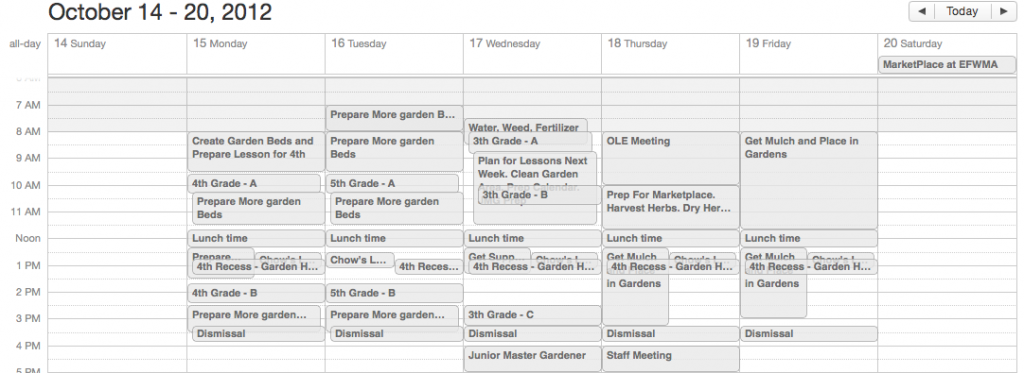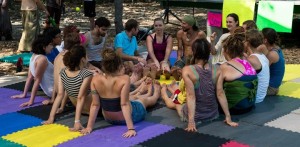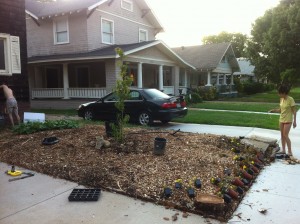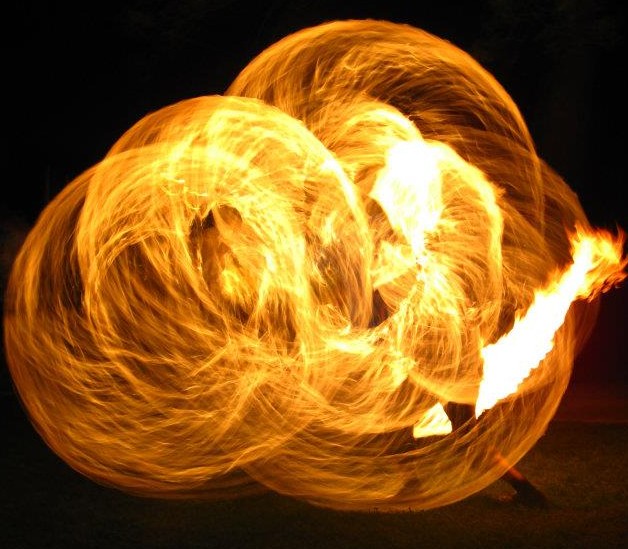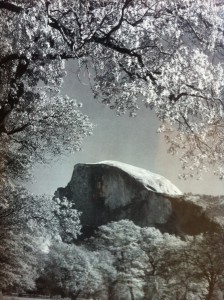“This first experiment, simply doing nothing, was a magnificent failure. It was not natural farming; it was abandonment.” – Masanobu Fukuoka
Category Archives: Slow Learning
Resource Dilution
It’s a concept that is used to describe the amount of resources available for the amount of children that you have.
The theory is based on the idea that parents only have a limited amount of resources. With each additional child the parents resources get diluted. Imagine two families with the same amount of resources, one family only has one child and the other family has four. The family with one child has four times the amount of resources available for their one child than the other family.
This same idea is true for projects, friends and just life in general. The more you do the more spread out you are, the less energy, time, and resources you have for each addition to your life.
The common pattern is that less is more. Don’t fall into the trap of doing everything. You’ll end up with nothing.
The exception in my opinion is when a person has conquered a project to the point where people and their environment can build up on it or when a person is questioning what they truly want to do with their life. For example, conquering a project to benefit mankind and nature could be feeding and growing the soil to cultivate food for us and the microbes in the soil, win win. Next steps in succession could be selling the extra produce, giving it away, or making value added products like making pickled vegetables or raising farm animals. Questioning what you want to do is simply trying a lot of things to find the few things that you are passionate about, running through the gauntlet.
All of this is slow and small solutions in permaculture or the Tortoise and the Hare if you like fables.
Self-Reflection: Face Yourself
Do it! As soon as you can.
Here’s the rundown. When we are working on our passions and life legacy, it’s hard to see through our own eyes the areas we really need to work on. It’s easy to see the successes. It’s easy to report our wins and ignore the losses.
The shortcomings and challenges we face hit our blind sides or they blur out around our peripheral vision. It’s hard to face the mountain we have to climb. It’s difficult to face up to the reality of a huge portion of ourself, the failures. Many times, we don’t see what’s happening and it continues to happen because of unconscious ignorance.
The cure to unconscious ignorance? Mindful observation, self-reflection, documentation. I’ve been working as a part time educator and a part time gardener. I reflect everyday on what’s going well and what needs work in the garden. As a teacher, it’s difficult to see myself, what I’m saying and doing in the classroom. I get feedback from other teachers, but it’s difficult to get the reality of what’s going on. To change the paradigm of ignorance, my co-worker and I are going to video our lessons, reflect on what we’re doing well, and find potential solutions to our shortcomings, continually challenging us to become better educators.
It won’t be easy at first, it’ll most likely be humiliating, but that’s what makes it fun. In time, we’ll make great strides through many laughable moments and failures, warriors in the field of education and cultivating yourself.
Slow and Small Solutions in a Fast Paced World
It’s Monday morning, and there are plenty of things to accomplish during the week at work. Mulch needs to be spread, lessons need to be prepared, materials arranged for the lessons, plants watered, meetings to attend, and everything else that pops up in life. It’s becomes easy to get stressed and overwhelmed just thinking of the daunting tasks in one single day.
On the other side of the coin, big dreams and ambitions are lofty and somehow seem more attainable than all the small things that occur in the daily and weekly commotion. Leaving a suburban area to live on a farm out in the middle of no where, building community living centers, creating large aquaponics systems, and growing a food forest overnight.
The problem for me arises when the big dream is automatically pursued without conscientiously thinking about the tasks and steps to reach it. It’s the drive for the instant gratification of reaching the goal and the ignorance that makes it attractive. In a short amount of time, all of the small tasks begin to accumulate and overwhelm me and burn out my passion, energy, and time.
The issue percolates to other realms in society and not just in my own life. The pattern is emergent within teaching, parenting, and in all people who desire to live a better life and in a better world. The truth then lies in the details that connect these disciplines together.
Non-Cognitive Skills
It was about a month ago that I heard the episode of This American Life on Back to School. The episode focused on the concepts and ideas that should be taught in school and at home to ensure future success. The show begins with an economist, James Heckman, who took the task of looking at GED and high school graduates. The initial drive was from the idea that people who obtained a GED saved enormous amounts of time, energy and money.
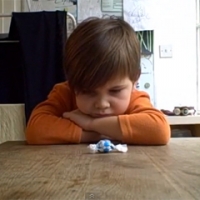 Heckman began to question though whether the GED graduates were as successful in life as the high school graduates. In a long term study across the board, high school graduates had better paying jobs, were married for longer periods of time, had less divorces, were better in the military, and the GEDs virtually dropped out of everything they started.
Heckman began to question though whether the GED graduates were as successful in life as the high school graduates. In a long term study across the board, high school graduates had better paying jobs, were married for longer periods of time, had less divorces, were better in the military, and the GEDs virtually dropped out of everything they started.
This raises the next question, what is it that divides GED students from high school graduates. The test the GED graduates take is supposed to challenge people on the same level as people in high school. The answer is a very elusive one, non-cognitive skills. Heckman defines it as character, social skills, conduct, and skills that are empiracly difficult to measure.
The study continues for another 10 years, and the economist begin to isolate the  non-cognitive skills that are the most significant. One that was found to be highly significant is self-control. In the late 1960s, a group of scientist observed children resisting the urge to eat a sweet treat in the present moment, enter the marshmallow test. The child would be sitting down and offered a cookie if they ringed a small bell on a table; however, if they waited 10 minutes to ring the bell, they would receive two cookies. It was literal torture for these children to wait, to delay satisfaction. In the long term though, the scientists tracked these peoples’ lives and continued to study how they would respond to temptations and life, and discovered more than what they intended. The children who were able to resist eating the sweet treat for longer periods of time succeeded far beyond others in stressful situations, maintaining friendships, and simply paying attention.
non-cognitive skills that are the most significant. One that was found to be highly significant is self-control. In the late 1960s, a group of scientist observed children resisting the urge to eat a sweet treat in the present moment, enter the marshmallow test. The child would be sitting down and offered a cookie if they ringed a small bell on a table; however, if they waited 10 minutes to ring the bell, they would receive two cookies. It was literal torture for these children to wait, to delay satisfaction. In the long term though, the scientists tracked these peoples’ lives and continued to study how they would respond to temptations and life, and discovered more than what they intended. The children who were able to resist eating the sweet treat for longer periods of time succeeded far beyond others in stressful situations, maintaining friendships, and simply paying attention.
As an adult now, the significance of learning this one tool is astronomical. As the years go on, the responsibility becomes larger. We are responsible for children learning self-control, are dealt a bigger role in society with access to tools, knowledge, and the future of this planet, and yet many of us have not mastered or even thought about the idea of mastering ourselves.
The trick is to make self-control a habit.
“Keep Your Goals to Yourself”
We’ll move away from self-control for a moment and move our attention to goals in general. Every new year, people create new years resolutions and strive to accomplish that task. The problem arises when people taut about their resolutions and share it with everyone that they talk to. In the end, they feel great from sharing and letting people know while getting positive feedback from their peers.
The issue arises in the mind. Derek Sivers delivers a great TED talk on the issue of keeping  your goals to yourself. By saying and sharing, we trick the mind into thinking the task has been accomplished by substituting the real genuine gratification of doing with one that is replaced by talking. Sivers concludes that we should keep those goals to ourselves or if we are tempted to say it we beat ourselves up with the harsh reality of what it’s going to take to complete it so we get no satisfaction from it.
your goals to yourself. By saying and sharing, we trick the mind into thinking the task has been accomplished by substituting the real genuine gratification of doing with one that is replaced by talking. Sivers concludes that we should keep those goals to ourselves or if we are tempted to say it we beat ourselves up with the harsh reality of what it’s going to take to complete it so we get no satisfaction from it.
A Few Tools
Overall, there is a reoccurring pattern in the realm of success and conquering dreams, delaying immediate results through self-regulation and control.
Changing behaviors though can require extra work, energy, and time to create a dedicated effort in manifesting a healthy feedback loop of successful results. There is no one singular method in creating new habits. However, the ones that have stayed with me the longest are slowing down, observing, meditating, and writing.
Slowing down is essential to realize of how much time is available to create our dreams. Rushing to solutions or conclusions often results in more work later on. It’s best to give things some thought beforehand. This vital step is crucial for those that follow.
Observations clue us into whether we are headed in the correct direction on the right assumptions. In a fast paced world, this process is easily blurred from an incorrect realization. For example, those who switch from conventional farming to organic may see horrendous results in the first year and come to a conclusion that organic is worse than using chemical pesticides. Coupled with slowing down, the observation may be deduced to a depletion of soil fertility and erosion.
Meditation for me is a method to clear the mind of the ambient noise and clutter from the day. It’s a moment that allows the mind to guide your thoughts, actions, and words.
Finally, writing, drawing, or blogging catalogs your new habits and ideas into a new reality. It tracks the slow progress and shows the mountain that is about to be conquered with hard work and dedication. One my favorite sermons was at Creation Flame, the Church of Awesome which was based on the epic journey. It’s not meant to be easy. Every huge feat that was accomplished was done with strife, hardships, and in the end a sense of accomplishment.
In fewer words, without the journey the end is meaningless.
Live with passion.
The Wood Carver by Chuang Tzu
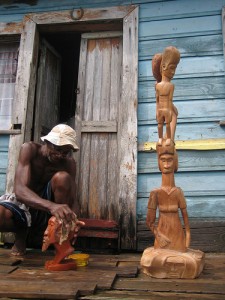 Khing, the master carver, made a bell stand
Khing, the master carver, made a bell stand
Of precious wood. When it was finished,
All who saw it were astounded. They said it must be
The work of spirits.
The Prince of Lu said to the master carver:
“What is your secret?”
Khing replied: “I am only a workman:
I have no secret. There is only this:
When I began to think about the work you commanded
I guarded my spirit, did not expend it
On trifles, that were not to the point.
I fasted in order to set
My heart at rest.
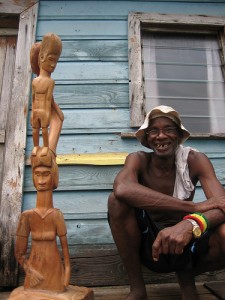 After three days fasting,
After three days fasting,
I had forgotten gain and success.
After five days
I had forgotten praise or criticism.
After seven days
I had forgotten my body
With all its limbs.
“By this time all thought of your Highness
And of the court had faded away.
All that might distract me from the work
Had vanished.
I was collected in the single thought
Of the bell stand.
“Then I went to the forest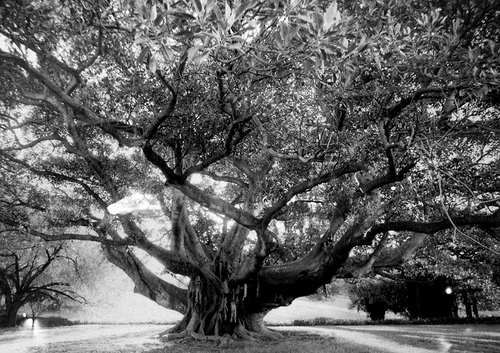
To see the trees in their own natural state.
When the right tree appeared before my eyes,
The bell stand also appeared in it, clearly, beyond doubt.
All I had to do was to put forth my hand
and begin.
“If I had not met this particular tree
There would have been
No bell stand at all.
“What happened?
My own collected thought
Encountered the hidden potential in the wood;
From this live encounter came the work
Which you ascribe to the spirits.”
– Chuang Tzu
from The Way of Chuang Tzu by Thomas Merton
I just recently had a staff development at East Fort Worth Montessori, and it was interesting to see our administration focus on our personal aspirations and visions in relation to the universal goal of the school.The Wood Carver was one of the poems we read to reflect how we taught in the classroom or lived our lives. It was an enlightening moment that has been reoccurring lately in my life and I felt the need to share.
Preparation
Before the carver set on his quest to create the bell stand, he first prepared his mind. He ‘guarded his spirit, did not expend it on trifles that were not to the point.’ Further on, he even states he forget about the prince and the court. It reminds me of how I often get caught in the trap of all the demands of the world, my administration, and my peers. Instead, I need to prepare myself for the work I do and remind myself of the single idea of gardening.
Implementation
With a sense of purpose instilled in his mind, the wood carver looked for a tree and saw the bell stand within it. Those stanzas leaped out at me. When I first arrived at the school, my tasks were many, they were cluttered, and unclear. By taking the time to analyze and observe the landscape, it became clear what had to be done. I could see the garden take its form, and it’s slowly becoming the reality out of the vision.
Reflection
It’s hard to realize the process at times when we rush ourselves into the action of living life. Having the space for creative development is necessary to see the ‘hidden potential’ in everyday things. Slowing down, being still, and cultivating ourselves creates the living experience which inspires and instills a sense of awe in others and ourselves.

Poi: Playing with Fire
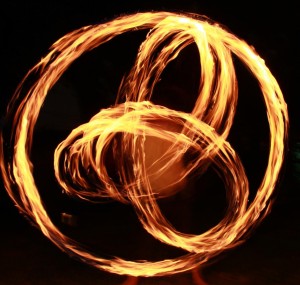
Triquetra Photo taken by Isiac Ramirez
It began in the drug filled years of my teens. A few friends introduced glow sticks and ever since then I became fascinated with dancing with the luminescent objects. Evolution took its tole and eventually we attached ropes to them. At that moment, the beautiful lights became dangerous.
With vague memories of the previous night, I would wake up with bruises all over my body. Apparently, the beautiful display of lights results into self-mutilation the following day and rants from my friends who would tell me I would hit everything around me with spiraling glow sticks. It took me years to learn my lesson.
In 2010, I attended a camping trip with some friends at an event called Art Outside. The idea of dancing with fire was a familiar thing, but I never realized it was the exact same display of art. The major difference was that the artisan in between the flames or glow sticks was calm and collected. They knew exactly where the fire is and how to direct it. If it was me, I would’ve been on fire.
My fascination immediately ignited into a new passion; I had to spin fire.
The light show bonanza is called poi. It originated in New Zealand from the indigenous tribe, the Maori, and that’s as far as I know about the history. Modern poi has taken their traditions and has been used with just about anything. You can use two socks with rice inside, tennis balls on strings, a rock, or whatever your imagination can combine with two ropes and two objects to spin around your body.
After Art Outside, I would spend time everyday with two tube socks and a bag of rice in each of them. The self-mutilation continued for a while and has slowly become a memory of the past. With each day, I would learn new tricks and techniques until I refined my own style. My progress in displaying poi also shifted the mental state of my initial fascination.
The want to spin fire changed into the desire to tame myself. Although the display for the public are spiraling meteors that twirl around your body, the dancer themselves don’t see the same display. The heat is more present to us than the show. To tame the element of fire required that a person first becomes conscious and aware of themselves and their surroundings. The last thing any fire dancer wants is to hit anybody or to change a tame fire into an uncontrollable flame.
The progression of the fire arts continued to transition who I am. Controlling my mind allowed me to think through my actions more thoroughly and realize how the poi was flowing from internal ideas into the reality of spinning flames. From that idea, poi translated into the co-creation of moving abstract thoughts into a particular direction in the material world; synonymous to moving my arms to direct the fire around my body.
And so, I realized it is the same with many if not all of the arts.
Tame the mind to co-create your ideas with the elements of the universe, otherwise, you may be playing with fire.
Life Design: Slow Learning and the Beauty of Hobbies
Every hobby is a journey with lots to learn along the way. Reading a book to accrue knowledge or creativity, gardening outside to grow beautiful flowers, cooking delicious herbs or scrumptious veggies, or just hiking up a hill to see the surrounding area around you. It’s all a pathway to finding new things about the world around, within, or somewhere near us.
At times, it’s hard to realize the steps required to reach the destination. It gets so easy to fixate on that pinnacle point of your potential. In this way, the journey becomes less meaningful and more destination oriented. It’s good to have goals, but creating the pathways to them are equally as important.
Half Dome
After finishing high school, my twin brother and I hiked up Half Dome in Yosemite Park. We were at the fresh age of 18. A few years beforehand, we visited the national park and saw that huge granite piece of rock. We both looked at each other and knew immediately we had to climb it. Somehow my parents remembered that key aspect of the trip and took us back.
It was a grueling 6 hour hike up and another quarter of a day back down. To me, we spent so much time walking and running up the mountain that at times we didn’t soak in the scenery around us. However, we knew we had a time constraint. We and my parents didn’t realize that we barely prepared to make the hike. We wore comfy tennis shoes, brought 3 bottles of water, and a few snacks. The only thing we made sure to do was wake up really early to get our day started. Our physical shape was over estimated as well. Even in our teenage years, we weren’t as fit as we thought.
With each way point along the trail, we thought we were almost there getting closer and closer. My focus was too intent on getting there. We finally reached the base of the dome and didn’t realize it was still another hour or two up.
Getting to the top turned out to be easier than I thought and not as satisfying. Although looking down into the valley was pretty cool. Getting down was another story. The physical force of gravity working with your legs and muscles created a harder impact. Our little teenage bodies had to absorb more force and continue that for another 8 miles down.
At the end of the hike, we made it. The 12 hour hike got the best of us though. My brother and I were debilitated for a few days and couldn’t enjoy the rest of the trip. We were burnt out and beaten down by ourselves.
Lessons Learned
Being over prepared at times can be a good thing but don’t get too fixated on all the details. Focus on the crucial and limiting factors. Take time to enjoy the experience. As you can pick up the pace do it at a rate that doesn’t destroy your mind, body of soul.
And Enjoy the Journey.
